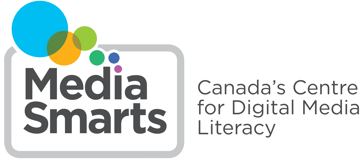For more than twenty-five years, Canadian teachers have been at the forefront of getting students online and preparing them to use the Internet in safe, wise and responsible ways. Thanks to the SchoolNet program in the 1990s, many young Canadians had their first experiences with networked technologies in their classrooms and school libraries. However, MediaSmarts' recent Young Canadians in a Wired World, Phase III study shows that even now, our so-called "digital natives" still need guidance from their teachers.
When you sign up for a service on a website or use an application for the first time, do you read the privacy policy and terms of use thoroughly? Or, like most of us, do you click “I Agree” as fast as you can?
Think you know how to read and understand privacy policies and terms of use? Learn how to make sense of legal documents for websites and apps with this interactive game.
Today is Pink Shirt Day, a national initiative to end bullying both offline and online. Since 2007, Canadians have been donning pink shirts to show their commitment to ending bullying in all forms.
You can make the world a better place TODAY. 10 tiny ways you can make the world a better place today.
In today's day and age, social media is everywhere. If you own a smartphone or computer of any sort, odds are you have at least one social media account and checking it is a part of your everyday routine. In high school, you’re constantly surrounded by social media! Whether it’s Facebook, Twitter, or Instagram, high school life nowadays revolves around these three entities. It’s a great way to connect with friends, make plans, help spread information if you’re in a school club or sport, and it can even help you meet new people. Although there are many great things social media can offer, there can be a couple downsides too.
The Your Connected Life guide is designed to help students who are just entering high school balance the demands of their offline life with their digital one.
Whether it’s to prepare for the future job market or just to manage the lives they already lead online, young Canadians need to be digitally literate. But what exactly is digital literacy, and how can we ensure that all Canadian youth are learning the digital skills they need?
Making Your Voice Heard: A Media Toolkit for Youth is designed to help young people understand how the news industry works, why youth stereotyping happens and how they can access media to get positive youth voices and stories heard.
Witnesses play a critical role when they witness acts and forms of bullying” and may suffer negative effects that are as bad as or worse than those suffered by the target. At the same time, there is evidence that youth who witness some kinds of cyberbullying may actually be more likely to perpetrate it themselves later.
